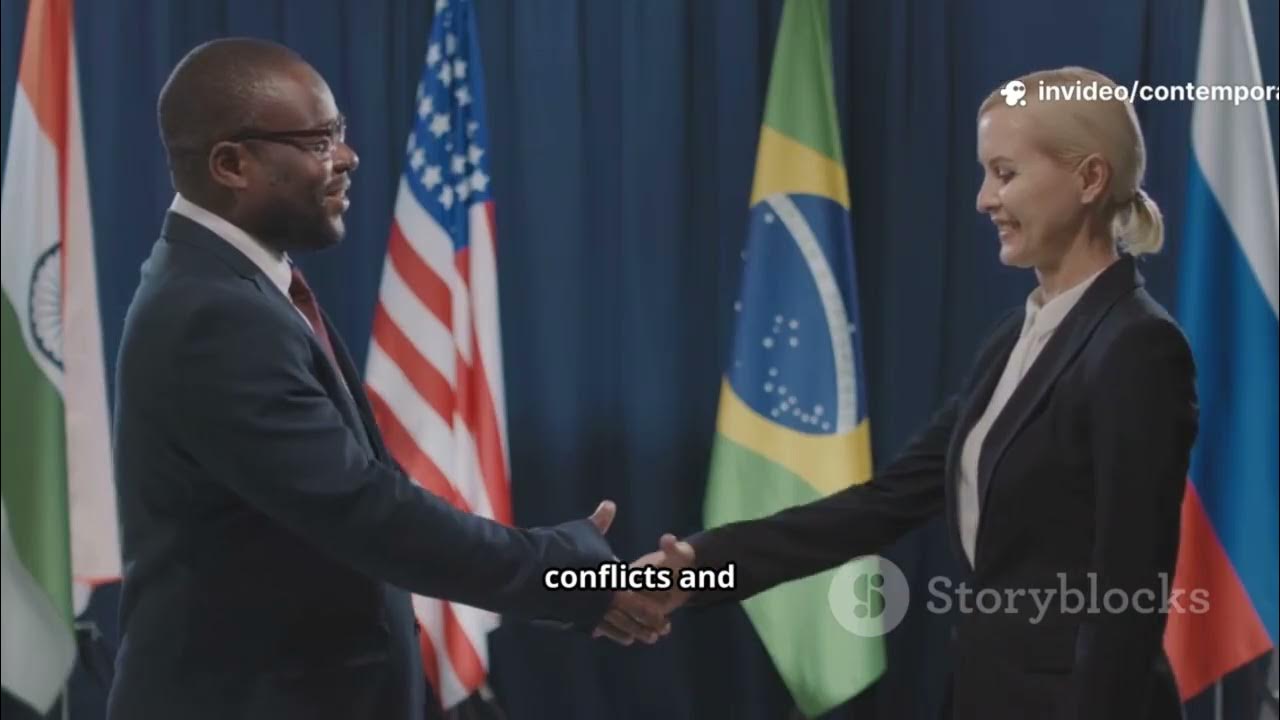10 A-3 Media
Summary
TLDRThis video delves into how global trade and media shape our identities. It discusses the impact of fast fashion on labor conditions and explores how the accessibility of global goods affects cultural identity. The script also highlights the role of media in promoting diversity and tolerance, while also raising concerns about the universalization of Western culture and the digital divide. It questions whether media encourages a global village or erodes cultural diversity, and it touches on the potential loss of traditional cultures due to the spread of technology.
Takeaways
- 👔 Global trade influences our identity through the clothes we wear, which are often shaped by fast fashion trends and media.
- 🌐 Outsourcing of clothing production to countries with different labor laws can have significant impacts on the workers' lives.
- 🏠 The ease of finding global products locally diminishes the significance of souvenirs and the cultural experience of traveling.
- 📺 The media plays a crucial role in shaping our identity by providing information and promoting the sharing of ideas.
- 🌏 Media convergence allows for the blending of cultures and the creation of hybrid cultural expressions through various technologies.
- 🌐 The universalization of pop culture, often led by Western media, can overshadow diverse cultural representations.
- 🔍 The concentration of media outlets can limit the diversity of perspectives and information we are exposed to.
- 🌱 Media can both encourage and challenge diversity, as it can promote tolerance and understanding but also lead to cultural homogenization.
- 📈 The digital divide is a concern as it highlights the unequal access to technology and its influence on identity and culture.
- 🏡 The spread of technology and media can lead to the loss of traditional cultural practices and ways of life.
Q & A
How does global trade influence our individual and collective identities?
-Global trade influences our identities by impacting what we wear and how we express ourselves. It also affects our perceptions through the availability of goods from different cultures in local markets.
What is fast fashion and how does it relate to global trade?
-Fast fashion refers to the quick production of outfits that follow current trends. It is related to global trade as these clothes are often outsourced to factories in countries with different labor laws to produce cheaply and quickly.
How does the media affect our identity?
-The media, including TV, newspapers, and the internet, has a significant impact on our identity by shaping our understanding of events and the world around us. It can also promote or limit diversity and tolerance.
What is the role of souvenirs in expressing identity?
-Souvenirs used to be a significant way to express the identity of having traveled to a particular place. However, with global trade, these items are now more commonly available locally, reducing their unique identity value.
How does the sharing of ideas through media contribute to globalization?
-The sharing of ideas through media contributes to globalization by allowing for the rapid dissemination of information and cultural exchange across borders, fostering a sense of global community.
What is ambivalence towards media and how does it relate to identity?
-Ambivalence towards media refers to the mixed feelings of both positive and negative impacts it has on our identity. Media can promote diversity and tolerance but also oversimplify issues, potentially dividing people.
How has the media's portrayal of diversity changed over time?
-The media has evolved to become more inclusive, with earlier controversial portrayals of interracial couples and later, more progressive depictions of diverse families and openly gay characters.
What is the impact of global media on local cultures?
-Global media can introduce new ideas and information to local cultures, potentially leading to changes in identity and lifestyle. It can also create a desire for material goods and Western lifestyles.
What is meant by the 'universalization' or 'Americanization' of pop culture?
-The 'universalization' or 'Americanization' of pop culture refers to the global spread of predominantly U.S.-originated cultural products, which can lead to a perceived homogenization of global culture.
How does media convergence affect the diversity of ideas and cultures?
-Media convergence allows for the use of various technologies to share messages, which can lead to a hybridization of cultures and the creation of new cultural forms, as well as increased access to diverse perspectives.
What is the digital divide and how does it impact identity?
-The digital divide refers to the unequal access to technology, which can impact identity by creating disparities in the ability to access information and participate in global cultural exchanges.
How might the spread of technology affect traditional cultures?
-The spread of technology can lead to a loss of traditional cultural practices as people become more engaged with media and less involved in local customs and communication methods.
Outlines

Dieser Bereich ist nur für Premium-Benutzer verfügbar. Bitte führen Sie ein Upgrade durch, um auf diesen Abschnitt zuzugreifen.
Upgrade durchführenMindmap

Dieser Bereich ist nur für Premium-Benutzer verfügbar. Bitte führen Sie ein Upgrade durch, um auf diesen Abschnitt zuzugreifen.
Upgrade durchführenKeywords

Dieser Bereich ist nur für Premium-Benutzer verfügbar. Bitte führen Sie ein Upgrade durch, um auf diesen Abschnitt zuzugreifen.
Upgrade durchführenHighlights

Dieser Bereich ist nur für Premium-Benutzer verfügbar. Bitte führen Sie ein Upgrade durch, um auf diesen Abschnitt zuzugreifen.
Upgrade durchführenTranscripts

Dieser Bereich ist nur für Premium-Benutzer verfügbar. Bitte führen Sie ein Upgrade durch, um auf diesen Abschnitt zuzugreifen.
Upgrade durchführenWeitere ähnliche Videos ansehen

FEU Public Intellectual Lecture Series | Dr. Diosa Labiste | Part 1

Soc 10 Unit 1 Lesson 1 Globalization and Identity

LESSON 2: SOCIOLOGICAL PERSPECTIVE OF THE SELF || Understanding the Self - Marvin Cabañero

INDIVIDU, KELOMPOK DAN HUBUNGAN SOSIAL || SOSIOLOGI KELAS X (SEPULUH) #6

Introduction to the Contemporary World

How the Internet Makes You Impotent - Parasocial Agency and Consumerism
5.0 / 5 (0 votes)
